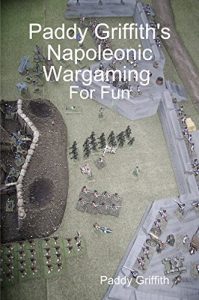In the early days of ‘modern’ wargaming, Napoleonic games were tremendously popular. They allowed the new, not necessarily young, wargamer to fight the glorious actions they had heard about in their school history lessons. Often starting with the Battle of Waterloo as their first action, the general would deploy his hastily painted soldiers from Airfix’s Napoleonic range. Airfix offered British and French infantry, as well as cavalry and guns for both sides.
Napoleonic tactics were simple in principle, but were hard to master in practice; for example infantry in a line maximized its firepower, but was vulnerable to cavalry. Changing to a square kept the infantry safe from the cavalry, but made them vulnerable to artillery and reduced their musketry to ¼ of the unit’s strength. The games, just like the battles of history, were all about combining the efforts of the infantry, cavalry and artillery using ‘combined arms tactics’ to sweep the enemy away. The key problem with these games was the ‘helicopter overview’ of the action the players had of their largely divisional sized games. While representing the battles of the Napoleonic Wars in some ways, they did not recreate experience of the commanders of the time.
Paddy Griffith’s excellent book aimed to fill the gap and offer no less than seven different sets of rules to simulate the experience of command at different levels. Just as the early wargamers took the Airfix Napoleonic’s and converted them for use in a wide range of periods, the ideas offered by Paddy in these rules have equal potential to transform any wargamer’s tabletop experience. I am very pleased for the opportunity to reprint this classic work.
This book contains no less than seven sets of rules: Skirmish level, Divisional game, Brigade game, Army level game, Generalship game, Map Kriegsspiel and Tactic Exercises Without Troops
This revised edition includes: A new comprehensive bibliography for the Napoleonic Wars and a new foreword by Arthur Harman.
Napoleonic tactics were simple in principle, but were hard to master in practice; for example infantry in a line maximized its firepower, but was vulnerable to cavalry. Changing to a square kept the infantry safe from the cavalry, but made them vulnerable to artillery and reduced their musketry to ¼ of the unit’s strength. The games, just like the battles of history, were all about combining the efforts of the infantry, cavalry and artillery using ‘combined arms tactics’ to sweep the enemy away. The key problem with these games was the ‘helicopter overview’ of the action the players had of their largely divisional sized games. While representing the battles of the Napoleonic Wars in some ways, they did not recreate experience of the commanders of the time.
Paddy Griffith’s excellent book aimed to fill the gap and offer no less than seven different sets of rules to simulate the experience of command at different levels. Just as the early wargamers took the Airfix Napoleonic’s and converted them for use in a wide range of periods, the ideas offered by Paddy in these rules have equal potential to transform any wargamer’s tabletop experience. I am very pleased for the opportunity to reprint this classic work.
This book contains no less than seven sets of rules: Skirmish level, Divisional game, Brigade game, Army level game, Generalship game, Map Kriegsspiel and Tactic Exercises Without Troops
This revised edition includes: A new comprehensive bibliography for the Napoleonic Wars and a new foreword by Arthur Harman.






